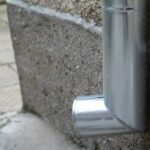
Critical Mistakes That Sabotage Heat Trace Systems
- Herminia Baker
- September 5, 2025
- Default
- 0 Comments
Heat trace installations protect critical infrastructure from freeze damage, but even minor oversights can lead to system failures, costly repairs, and operational downtime.
Professional installers and facility managers face numerous challenges during installation, from improper cable placement to inadequate insulation coverage.
Understanding these common issues before they occur can save significant time, money, and frustration. The specialists at Heatline.com have identified recurring patterns in problematic installations across various industrial and municipal applications.
This comprehensive overview examines six major problem areas that frequently compromise heat trace system performance. Each section provides practical troubleshooting strategies and prevention methods to ensure reliable freeze protection throughout the system’s operational life.
Poor Cable Placement and Routing
Cable positioning directly affects system efficiency and longevity. Incorrect placement remains one of the most frequent installation errors encountered in both new construction and retrofit applications.
Spacing and Contact Problems
Heat trace cables require consistent contact with the pipe surface to transfer heat effectively. Common spacing issues include:
- Cables installed with gaps exceeding manufacturer specifications
- Uneven spiral patterns that create cold spots
- Insufficient contact pressure against the pipe surface
- Cables positioned on the wrong side of the pipe relative to ambient conditions
Installation Errors to Avoid
Poor routing decisions compound spacing problems and create additional maintenance challenges:
- Sharp bends that exceed the minimum bend radius requirements
- Cables crossing over themselves, creating potential failure points
- Inadequate support clips allow cable movement over time
- Failure to account for pipe expansion and contraction cycles
Regular inspection during installation helps identify these issues before system startup. Documentation of cable routing patterns also aids future maintenance and troubleshooting efforts.
Inadequate Insulation Coverage
Insulation systems work in partnership with heat trace cables to maintain target temperatures efficiently. Gaps, compression, or inappropriate materials significantly reduce system performance.
Coverage Gaps and Thermal Bridges
Complete insulation coverage prevents heat loss and reduces energy consumption:
- Uninsulated sections at fittings, valves, and connection points
- Compressed insulation that loses thermal resistance properties
- Thermal bridges created by uninsulated support structures
- Moisture infiltration that degrades insulation performance
Material Selection Issues
Insulation material compatibility affects both performance and system longevity:
- Temperature ratings are insufficient for maximum operating conditions
- Chemical incompatibility with pipe materials or process fluids
- Vapor barriers are improperly installed or damaged during construction
- Thickness calculations that don’t account for ambient temperature variations
Proper insulation system design requires careful attention to joint details, penetrations, and support structures that can compromise thermal performance.
Electrical Connection Failures
Electrical connections represent critical points where installation errors frequently occur. Poor connections lead to system malfunctions, safety hazards, and premature component failure.
Power Supply Configuration
Electrical supply issues affect system reliability from initial startup:
- Voltage ratings that don’t match cable specifications
- Circuit protection is inadequate for cable amperage requirements
- Ground fault protection is missing or improperly configured
- Multiple circuits are improperly balanced across phases
Termination and Junction Problems
Cable termination quality directly impacts system safety and performance:
- Moisture infiltration at connection points
- Inadequate strain relief is causing cable damage
- Heat-shrink or tape applications that fail over time
- Junction boxes inadequately rated for environmental conditions
Professional electrical inspection during installation helps identify potential problems before they cause system failures or safety hazards.
Control System Integration Errors
Modern heat trace systems rely on sophisticated control systems to optimize performance and energy consumption. Integration problems create operational inefficiencies and compromise freeze protection reliability.
Sensor Placement and Calibration
Temperature sensors provide critical feedback for system operation:
- Sensors positioned incorrectly relative to heated surfaces
- Calibration drift that occurs over time without regular maintenance
- Environmental protection is inadequate for operating conditions
- Multiple sensor systems with inconsistent readings
Programming and Logic Issues
Control system programming affects both performance and energy efficiency:
- Temperature setpoints are inappropriate for application requirements
- Time delays that don’t account for thermal mass characteristics
- Alarm thresholds set too high or too low for effective monitoring
- Integration problems with building management systems
Regular control system commissioning and periodic recalibration ensure optimal performance throughout the system’s operational life.
Environmental Protection Deficiencies
Heat trace systems operate in challenging environmental conditions that require appropriate protection measures. Inadequate environmental protection leads to premature failure and reduced system reliability.
Weather and Moisture Exposure
Environmental protection prevents damage from weather-related conditions:
- Cable jacketing is inappropriate for UV exposure levels
- Moisture infiltration at penetrations and connections
- Corrosion protection is inadequate for chemical exposure
- Temperature cycling effects on material properties
Mechanical Protection Requirements
Physical protection prevents damage from operational activities:
- Impact protection is missing in high-traffic areas
- Vibration isolation is inadequate for equipment-mounted applications
- Support systems that don’t accommodate thermal expansion
- Access panels that compromise system integrity when removed
Comprehensive protection strategies address both immediate installation requirements and long-term operational challenges.
Maintenance and Documentation Oversights
Proper documentation and maintenance planning ensure reliable long-term system operation. Incomplete records and inadequate maintenance procedures create operational challenges and increase failure risks.
Installation Documentation
Complete documentation supports effective troubleshooting and maintenance:
- As-built drawings that don’t reflect actual installation conditions
- Cable specifications and routing information are incomplete
- Control system programming documentation is missing
- Maintenance schedules are not established or communicated
Commissioning and Testing Procedures
Thorough commissioning identifies problems before they affect operations:
- Insulation resistance testing is incomplete or inadequately documented
- Ground fault testing was not performed on all circuits
- Control system functionality not fully verified
- Performance testing under varying ambient conditions is incomplete
Professional commissioning and comprehensive documentation create the foundation for reliable system operation and efficient maintenance throughout the system’s service life.
Building Reliable Heat Trace Systems
Successful heat trace installations require attention to detail across multiple disciplines, from mechanical installation through electrical connections and control system integration.
The common issues identified by professionals at Heatline.com represent opportunities for improvement in both installation practices and ongoing maintenance procedures.
Preventing these problems requires systematic approaches to planning, installation, and commissioning. Regular training for installation personnel, comprehensive quality control procedures, and thorough documentation practices contribute to long-term system reliability and performance.
Partnering with experienced suppliers and following established industry standards helps ensure installations meet both immediate operational requirements and long-term performance expectations.




